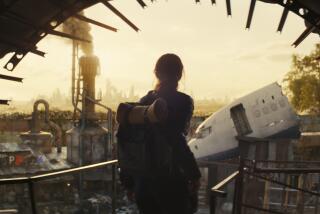Readers React: What happened in Hiroshima and Nagaski wasn’t ‘nuclear war’
- Share via
To the editor: Your letter from Ross T. Quinn detailing the experience of his father as a young U.S. Navy officer viewing the aftermath of the atomic bomb blast at Nagasaki in 1945 was both moving and evocative. (“A life dedicated to peace after witnessing the devastation at Nagasaki,” Readers React, May 14)
At the same time, Quinn’s reference to Nagasaki as “the site of nuclear war” represents a distinction with a difference.
Atomic bombs, not nuclear bombs, were dropped on Hiroshima and Nagasaki, immediately ending the war with Japan. The first atomic bomb test released the equivalent of 20,000 tons of dynamite, in contrast with 10 million tons in the first thermonuclear test.
Moreover, the bombs dropped by the U.S. on Japan were done so unilaterally, not in a nuclear (or atomic) “war.” The world came closest to a nuclear war during the Cuban Missile Crisis in October 1962, when the U.S. and Soviet Union each came to the brink of launching more than 1,000 missiles at the other.
Mark E. Kalmansohn, Santa Monica
..
To the editor: Quinn’s letter on his father’s eyewitness account of history in Nagasaki exemplifies the best in print journalism and why my family has been a subscriber to The Times for decades.
To those of us whose living parents and grandparents barely survived the horrors of World War II, these eyewitness accounts are invaluable because of the way they preserve and share history not taught in schools and celebrate the lives of those who bore witness.
More of this, please.
Craig Carr, West Hills
Follow the Opinion section on Twitter @latimesopinion and Facebook
More to Read
A cure for the common opinion
Get thought-provoking perspectives with our weekly newsletter.
You may occasionally receive promotional content from the Los Angeles Times.









